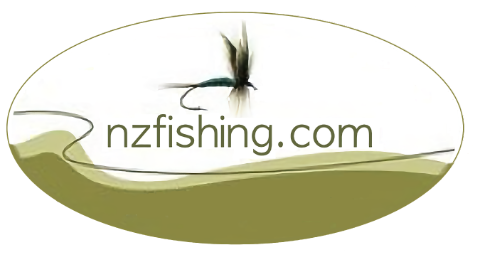| Fish type, number and size |
The number of trout (mostly brown plus some sea run trout) is moderate. The average size is around 3-4lb with some much bigger fish throughout its length but especially in the headwaters. The brown trout caught here are generally the largest fish in Golden Bay . |
| Situation |
The Aorere is a large river, 43 km in length, that drains the Wakamarama and Haupiri ranges in the Kahurangi National Park region in Golden Bay west of Nelson. It can be reached in 5 minutes from Collingwood and 2 hours from Nelson. |
| Maps |
Access map
|
| Check conditions |
View the Aorere river flow and Aorere rainfall.
View MetService weather forecast.
|
| Description |
The Aorere is a beautiful and scenic river that receives little angling pressure especially in the more remote headwaters. Except after very heavy rain the river remains fishable, especially in the upper reaches.
In its upper reaches it flows through beautiful bush country that will appeal to any energetic angler interested in the chance of snaring a trophy size fish in pristine surroundings.
In the middle and lower reaches the river is large and flows over more open land. The water carries more colour than the upper reaches, especially after rain though generally remains fishable.
|
| Headwaters and upper reaches |
Headwaters
The headwaters of the Aorere provides a true wilderness experience and one to challenge the competent angler. The river here is a delight to fish, especially with a dry fly and / or nymph. It flows through a beautiful stretch of virgin forest over a rock, boulder and shingle bed and generally remain clear except after very heavy rain.
Upper reaches
The upper reaches above the confluence with the Brown River (at the start of the Heaphy track) holds the best fishing that the Aorere has to offer as this is classic wilderness fishing for a good population of large hard fighting fish. Fish can be spotted in some sections though the fast flow and depth of some of the pools require anglers to fish blind. This is not a section easily fished in a day and anglers are best to spend at least one night on the river. The fishing is challenging and should only be attempted by fit competent anglers who are willing to walk some distance.
Access
Access to this section requires some serious walking along a defined track as the road ends at the Brown River (this is the beginning of the famous Heaphy Track). Helicopters are another option to get into the best fishing. See the access map.
|
| Middle reaches |
The middle reaches provide some good fly and spin water. Although there are several access points (sign-posted by Fish and Game), it often requires a little scrambling over rocks and down some steep banks to get to the best spots. In many areas the river runs between steep rock banks and the flow can be very powerful. There are many more open areas however and some good runs and pools that hold good fish numbers. The bed is mostly a mixture of rock and stones.
Access
The middle reaches are accessed via a number of small secondary roads. See the access map.
|
| Lower reaches |
In the lower reaches the river is deep and more sedate. In the area near the town of Collingwood it is quite tidal. Some sea-run trout can be caught in this section as well as kahawai, which provide excellent fishing at the mouth during the months from October to December when the whitebait come into the river. For the first few kilometres above the estuarine area, the river is slow moving and although contains a good resident fish population is not as interesting to fish as the middle and upper reaches.
Access
The lower reaches are easily accessed from roads around Collingwood. See the access map.
|
| Recommended lures |
Nymphs:
In the upper reaches use large weighted flies such as a gold bead Hare and Copper or Pheasants Tail (sizes 10 - 14). In the middle, use smaller nymphs, especially during the warmer months when the river is lower and clearer. Again any Pheasant Tail variant or Hares Ear or Stone Fly patterns in sizes 14 or smaller work well. Use weighted flies in the deeper or faster water.
Dry flies:
In the middle and upper reaches smaller dry flies are effective. Any Adams, Greenwell's Glory or Mole Fly can be effective in sizes 14 or smaller. During the day a Green
Beetle works well in early summer and a Cicada pattern from late summer.
Wet flies:
Small wets work very well during the evening when the fish are rising. Patterns such as a March Brown, Dad's Favourite or Greenwell's Glory are all effective.
Spinners: Spinners work well throughout the river but are especially effective in the lower reaches. Black Toby patterns, Tasmanian Devils and bladed spinners such as a Mepps or Veltic work well.
|
| Tributaries |
Tributaries to the Aorere River include the Kaituna River. |
| Regulations (1) |
| Applicable to |
Aorere River upstream from the Salisbury Road Bridge |
| Region |
Nelson Marlborough |
| Season |
1 October - 30 March |
| Methods |
Artificial fly, spinner |
| Bag limit |
2 Trout
Salmon: Nil
|
| Size limit (cm) |
No size limit |
| Regulations (2) |
| Applicable to |
Aorere River downstream from the Salisbury Road Bridge |
| Region |
Nelson Marlborough |
| Season |
All year |
| Methods |
Artificial fly, spinner, bait |
| Bag limit |
2 |
| Size limit (cm) |
No size limit |


